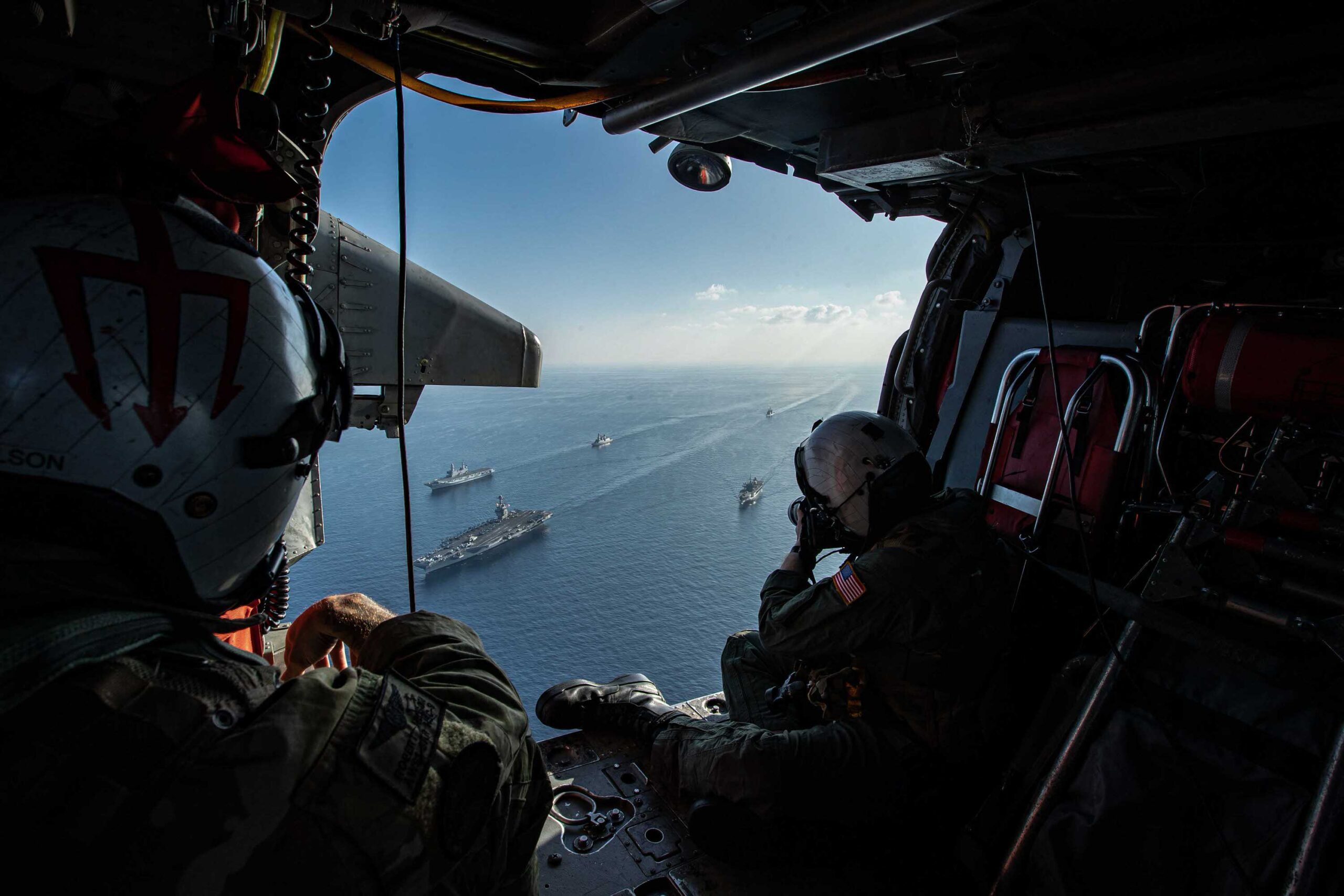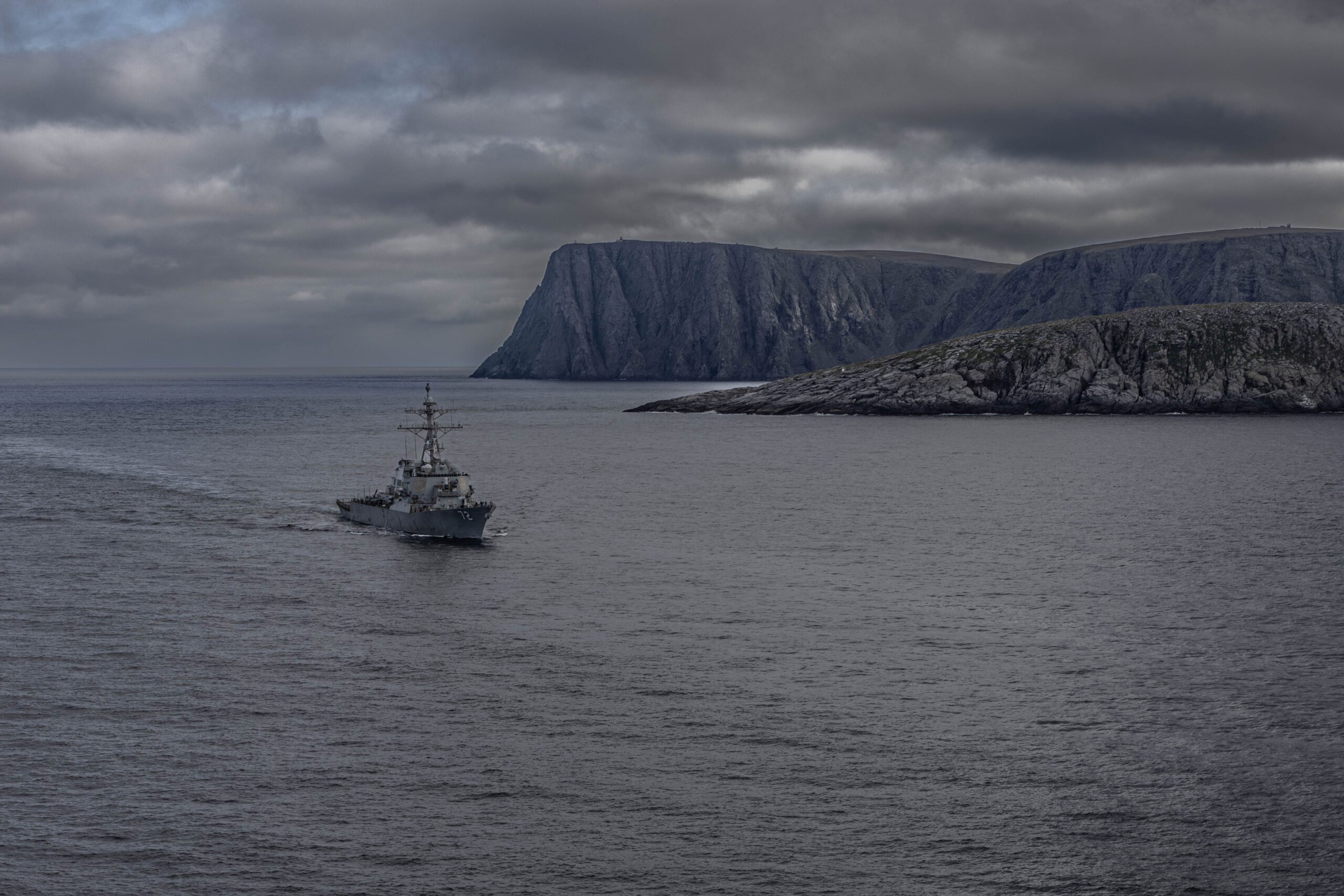by James Stavridis (Bloomberg Opinion) As Israel strikes at hundreds of Hamas targets in the tight confines of the Gaza strip, a brand-new nuclear powered American aircraft carrier, USS Gerald R. Ford, has arrived on station in the eastern Mediterranean.
She is at the center of a carrier strike group that includes not only an aircraft wing of 80 planes, but five highly sophisticated destroyers and cruisers.
Why send an American carrier to what is likely to be an urban ground fight? And what does it say about the implications for the deployment of US combat power globally?
When a crisis breaks out abroad, the president usually heads to the White House situation room and is immediately briefed on the location of the Navy’s carriers. I participated in such briefings as a senior staff officer in the 2000s, working for Secretary of Defense Donald Rumsfeld. Several of our carriers are always deployed at sea, and the National Security Council members have the latest locations and capabilities at their fingertips.
Related book: 2034: A Novel of the Next World War by Elliot Ackerman and Admiral James Stavridis
I have also found myself at the other end of the equation, far from Washington: First, for offensive operations from our carriers off the Horn of Africa in response to embassy bombings in East Africa in 1998; and then as commander of the USS Enterprise carrier strike group during combat in Afghanistan and Iraq. The new Ford-class carriers have a crew of around 5,000 and bring enormous capability to any crisis scenario, especially when paired with escorting warships.
Let’s start with the symbolism of this deployment. The ships are a powerful and visual embodiment of US determination in a crisis. Unlike Air Force attack aircraft, which when stationed abroad must operate from land bases subject to the control of host nations, our carriers can operate in international waters and be employed as the president directs. As we used to say aboard USS Enterprise, we are seven acres of sovereign US territory, counting both the flight deck and hangar decks from which the air wing operates.
When Secretary of Defense Lloyd Austin announced the deployment of the strike group on Sunday, it told our partners in Israel that we are standing with them in crisis. The endless footage of the carrier steaming at top speed to the eastern Mediterranean was a staple on every network. Equally important, it was a signal to Iran, Hamas’ principal backer, that any attempt to take advantage of this dangerous moment in Israeli history would face the might of the US military.
Beyond symbolism, the combat capability of the strike group is profound. The carrier brings a sophisticated early-warning and defense aircraft, the E-2 Hawkeye, which can provide a 24/7 command-and-control network to supplement Israel’s capabilities. The Hawkeye can link together detailed US satellite images, communications intercepts and other intelligence feeds (from drones, for example) to provide a coherent and comprehensive picture of the dense air battlespace.
The carrier also brings attack aircraft, including F/A-18 Super Hornets, and large stockpiles of precision-guided bombs and missiles that could be supplied to the Israelis. Would US planes become directly involved in an air campaign over Gaza? Given that the State Department has confirmed that US citizens have been killed and taken hostage, that possibility can’t be ruled out.
Another powerful aspect of the strike force is its five guided-missile ships, four destroyers and a cruiser. Each is equipped with the Aegis combat system, which can defend against conventional surface-to-surface missiles and, perhaps more importantly, against long-range ballistic missiles Iran might be tempted to employ on Israeli targets.
These ships can be positioned up and down the coast to defend Israeli cities and military installations. This could be crucial if the Lebanese terrorist group Hezbollah, another Iranian proxy, decides to use some of its inventory of 130,000 long-range missiles to attack Israel from the north. (It has fired a relatively small number already.)
Those support ships could also be used in an Israeli ground campaign into Gaza. The Israelis will certainly seek to kill or capture Hamas’ senior operators, and perhaps to fully overthrow the terrorist group. If the US chose to take a combat role, the ships have long-range missile systems that can be effective from offshore positions. US special forces, who might be involved rescuing Americans held hostages, could deploy ashore using the helicopters on the destroyers and cruisers.
Finally, if the situation deteriorates, the carrier and her escorts are an evacuation force in readiness for the roughly 200,000 Americans in Israel (most hold dual US and Israeli citizenship). If commercial airports are shut down and the US decides to pull its people out, the carrier and her escorts will take on the central role. And all the US warships have medical and humanitarian capability, from operating rooms to power and water generation.
There is a modest level of risk in the deployment: Hamas doesn’t have significant anti-ship capabilities, but a suicide or drone attack against one of the smaller ships — as happened to USS Cole in 2000 — is always a danger.
Related book: 2034: A Novel of the Next World War by Elliot Ackerman and Admiral James Stavridis
What if Tehran entered the fray? The Iranian Navy is a long way from the eastern Mediterranean, but it has sent ships to the Mediterranean previously; it has surface combatants, diesel submarines and combat aircraft that could threaten US warships. Still, it’s not a major concern: The carrier strike group can use its speed and anti-surface weapons against Iranian threats effectively.
All of this illuminates far more worrisome scenarios of US carrier strike groups facing a peer competitor, notably China in a potential invasion of Taiwan. The environment in and around that island would be extremely lethal: China has hypersonic weapons in great numbers, stealthy nuclear submarines, long-range bombers with cruise missiles and a very large fleet of surface ships. The US would need to keep the carriers far out to sea at least initially, and attempt to overwhelm Chinese capabilities using cyberattacks, long-range cruise missiles, aircraft and special forces before bringing the massive ships closer to the fray.
But in the current mission, the strike group — augmented by new Air Force deployments to regional bases — is a powerful symbol and capable combat presence in US support for Israel. USS Gerald R. Ford, by the way, is on her maiden deployment. It will be one to remember.
James Stavridis is a Bloomberg Opinion columnist. A retired U.S. Navy admiral, former supreme allied commander of NATO, and dean emeritus of the Fletcher School of Law and Diplomacy at Tufts University, he is vice chairman of global affairs at the Carlyle Group. He is the author most recently of “To Risk It All: Nine Conflicts and the Crucible of Decision.” @stavridisj © 2023 Bloomberg L.P.
Related book: 2034: A Novel of the Next World War by Elliot Ackerman and Admiral James Stavridis

 Join The Club
Join The Club











